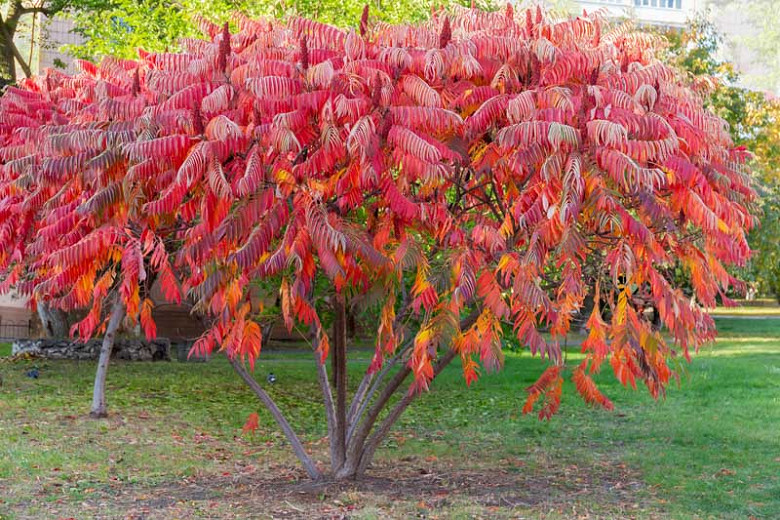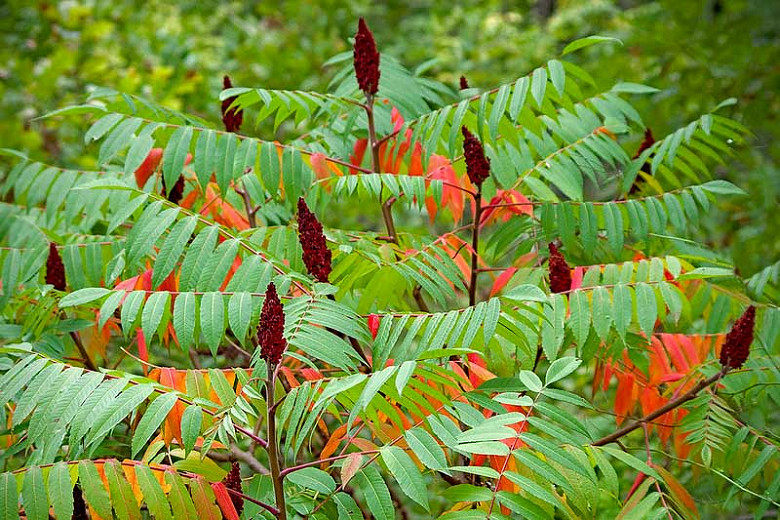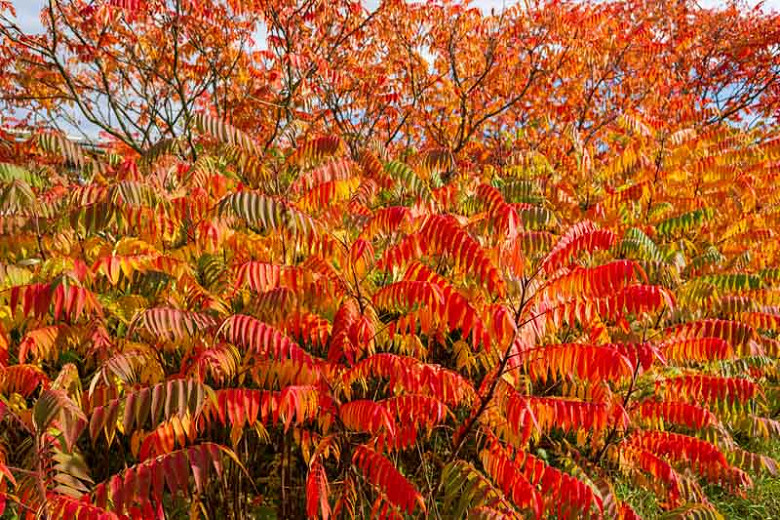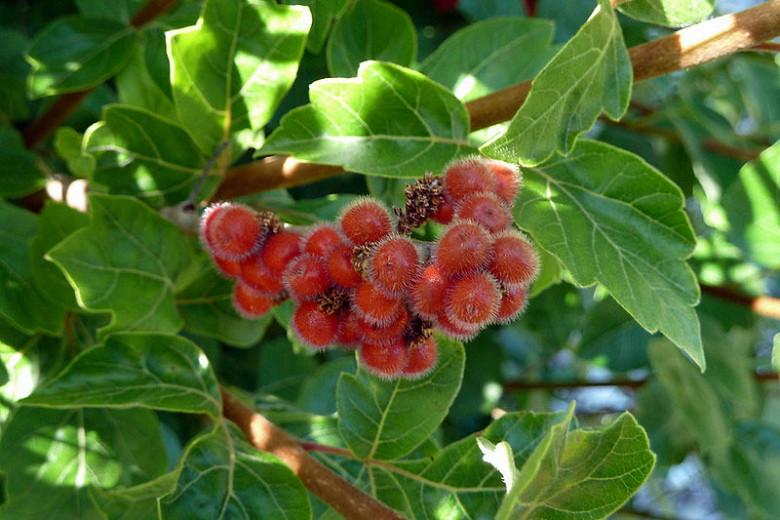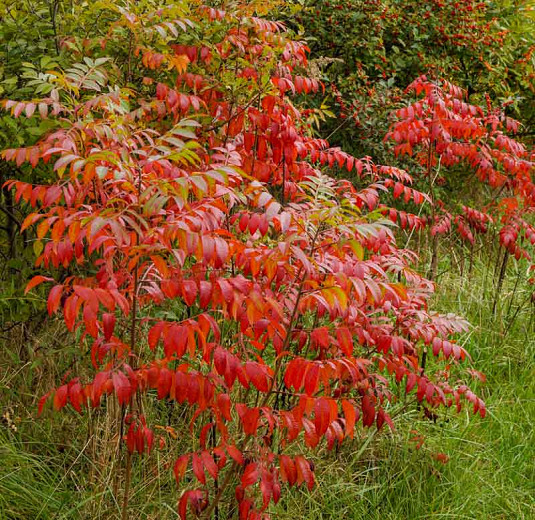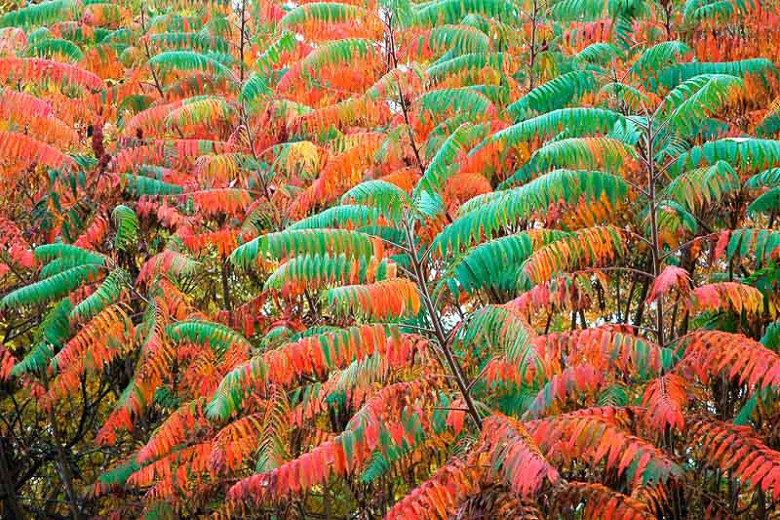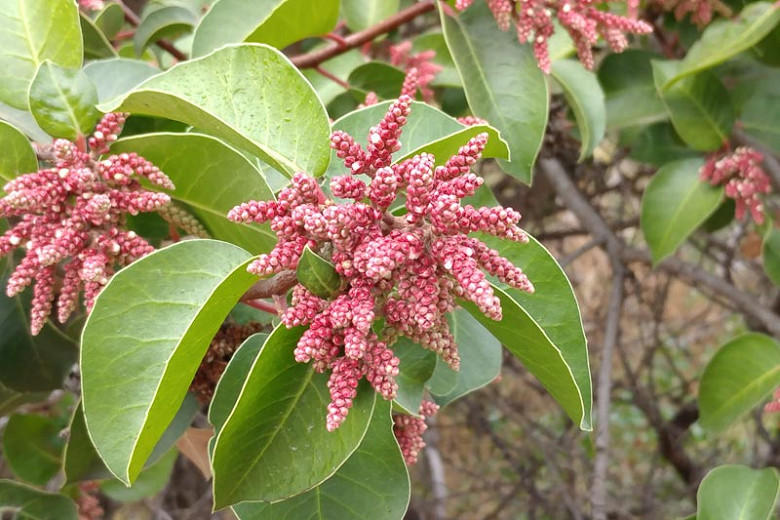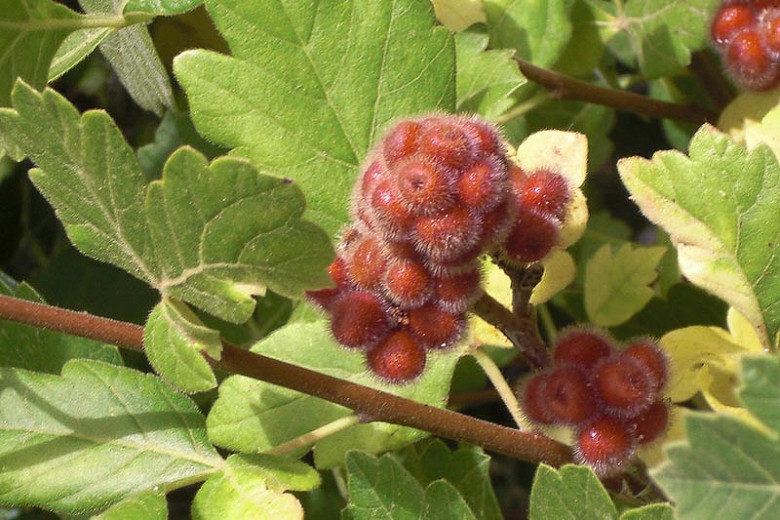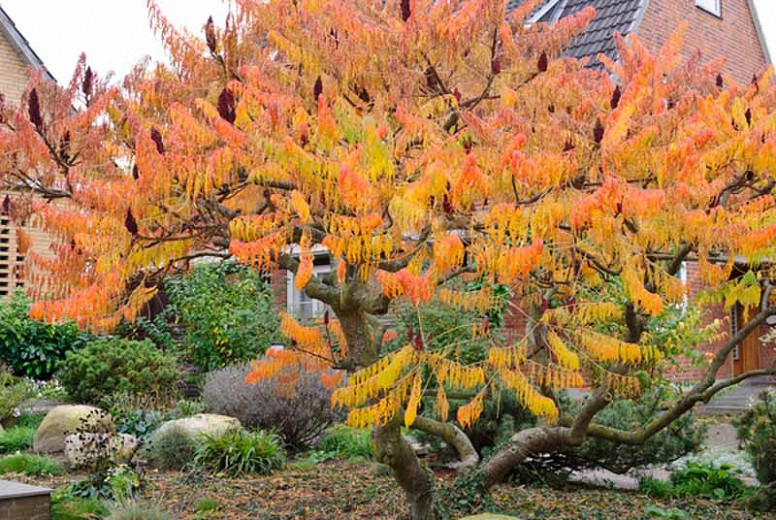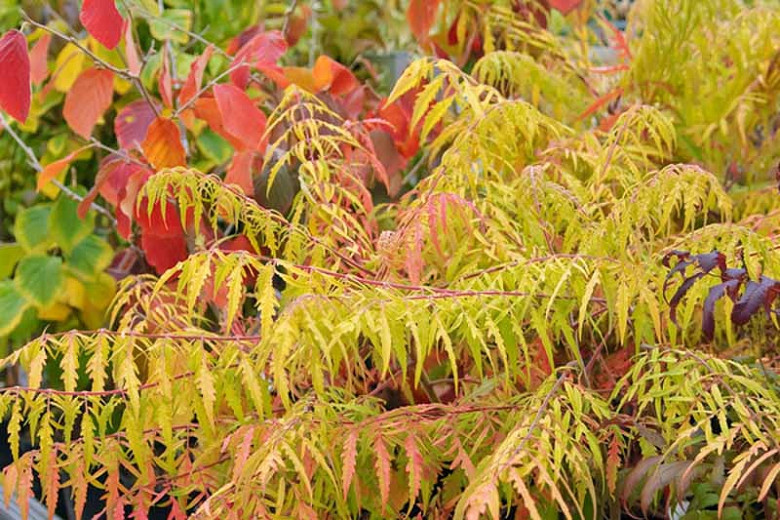Rhus typhina (Staghorn Sumac)
Prized for its spectacular fall foliage and showy fruits, Rhus typhina (Staghorn Sumac) is a large suckering deciduous shrub or small tree with picturesque branches and velvety reddish-brown branchlets. The foliage of large, pinnate, bright-green leaves, 24 in. long (60 cm), turns striking shades of orange, yellow and scarlet in fall. Cone-shaped panicles of green-yellow flowers bloom in early to mid-summer. Honeybees are attracted to the flowers. The blossoms are followed on female plants by dense crimson berries in pyramidal clusters that persist throughout winter. The berries provide winter food for many bird species and small and large mammals. In winter, the bare, widely forking, hairy twigs resemble the velvety horns of a young stag, hence the common name. Fast-growing, usually pest and disease-free, drought-tolerant, Staghorn Sumac may spread aggressively by root suckers to form extensive thickets. It is most effective on slopes for erosion control, or in drifts and colonies.
- Grows up to 15-25 ft. tall (4-8 m) and 20-30 ft. wide (6-9 m).
- A full sun or part shade lover, this plant is easily grown in average, moist, well-drained soils. Best fall color in full sun. Tolerates a wide range of soils as long as they drain well. Drought, dry soil, or rocky soil tolerant.
- Perfect as a specimen plant, cottage gardens, coastal gardens, or foundation plantings.
- No serious pest or disease issues. Keep an eye out for leaf spots, rusts, powdery mildew, blister, and cankers. Rabbit resistant.
- Propagate by seed or semi-hardwood cuttings. Sucker removal may be necessary, in winter.
- Native to eastern North America.
Requirements
| Hardiness | 3 – 8 |
|---|---|
| Heat Zones | 1 – 8 |
| Climate Zones | 1, 1A, 1B, 2, 2A, 2B, 3, 3A, 3B, 4, 5, 6, 7, 8, 9, 10, 14, 15, 16, 17, A1, A2, A3 |
| Plant Type | Shrubs, Trees |
| Plant Family | Rhus – Sumacs |
| Exposure | Full Sun, Partial Sun |
| Season of Interest | Summer (Early,Mid,Late)Fall |
| Height | 15' – 25' (4.5m – 7.5m) |
| Spread | 20' – 30' (6m – 9m) |
| Water Needs | Low, Average |
| Maintenance | Low |
| Soil Type | Chalk, Clay, Loam, Sand |
| Soil pH | Acid, Alkaline, Neutral |
| Soil Drainage | Moist but Well-Drained, Well-Drained |
| Characteristics | Showy, Fruit & Berries |
| Native Plants | United States, Midwest, Illinois, Indiana, Iowa, Kansas, Michigan, Minnesota, Missouri, Ohio, South Dakota, Wisconsin, Northeast, Connecticut, Delaware, Maine, Massachusetts, Maryland, New Hampshire, New Jersey, New York, Pennsylvania, Rhode Island, Vermont, Rocky Mountains, Utah, Southeast, Alabama, Georgia, Kentucky, Mississippi, North Carolina, South Carolina, Tennessee, Virginia, West Virginia |
| Tolerance | Drought, Rabbit, Dry Soil, Rocky Soil |
| Attracts | Bees, Birds |
| Garden Uses | Banks and Slopes, Beds and Borders |
| Garden Styles | Coastal Garden, Informal and Cottage |
